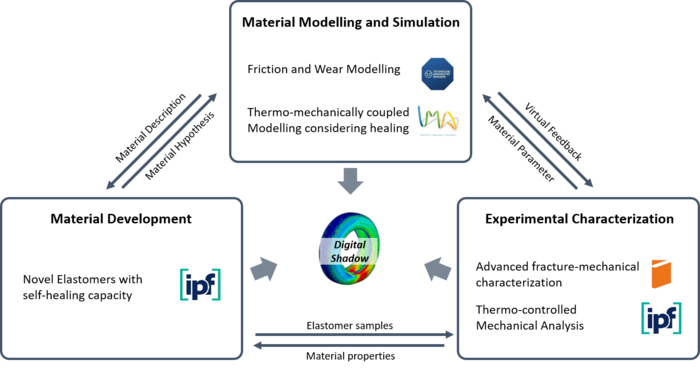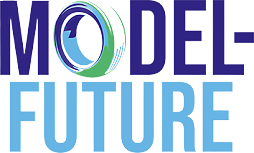Project Description

The future of technical materials and component designs is strongly affected by the European Green Deal with its ambitions with respect to sustainability and durability. The aims of these activities can be achieved only, if material concepts, experimental techniques and numerical modeling are used complementary and synergistically. Thus, this project will provide numerical approaches to enhance the predictive analysis of materials and products by an experimental-virtual laboratory contributing to a Digital Shadow as an intermediate milestone to a full Digital Twin of high-tech products, e.g. tires.
One major aspect of recent and future developments is based on electro-mobility – e-mobility. In the field of transportation, e-mobility will lead to a massive change of the requirements with respect to passenger car, SUV and light truck tires, but also scooter and motorbike tires. Due to the higher weight of e-mobility vehicles, especially because of heavy batteries and an increasing amount of electric and electronic side-devices (sensors & actors), the abrasion of tire tread materials, particularly filler-reinforced elastomers will dramatically increase leading to higher particle emissions and pollution, especially in the urban environment, i.e. cities. In addition, the durability of traditional tire tread elastomers will be enormously reduced due to the high torsional moment associated with electrical driving concepts that immediately act when starting the electrical engine of e-mobility vehicles. This effect is due to the torque characteristics of electrical engines that differ significantly from those of internal combustion engines, e.g. by showing a constant torque level from low to medium speed and the much higher energy efficiency. As a result, novel modeling tools, advanced experimental techniques and disruptive material concepts have to be developed to satisfy future trends and requirements on tire materials in terms of high durability, less abrasion and micro-pollution, reduced ecological footprint, increased sustainability and material efficiency. The goal of this project is to create and provide an experimental-virtual laboratory using combined experimental and numerical approaches to predict the lifetime performance of elastomers for future applications, which is not limited to tires but addresses this product class explicitly. Special emphasis will be given to model damage phenomena and wear. As a prerequisite to reliable simulations as part of a Digital Shadow, advanced experimental techniques characterizing quantitatively the fracture-mechanical properties of elastomers have to be developed and are available at the end of this project.

